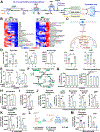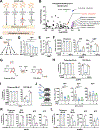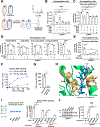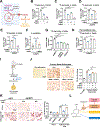Pyrimidines maintain mitochondrial pyruvate oxidation to support de novo lipogenesis
- PMID: 38547260
- PMCID: PMC11325697
- DOI: 10.1126/science.adh2771
Pyrimidines maintain mitochondrial pyruvate oxidation to support de novo lipogenesis
Abstract
Cellular purines, particularly adenosine 5'-triphosphate (ATP), fuel many metabolic reactions, but less is known about the direct effects of pyrimidines on cellular metabolism. We found that pyrimidines, but not purines, maintain pyruvate oxidation and the tricarboxylic citric acid (TCA) cycle by regulating pyruvate dehydrogenase (PDH) activity. PDH activity requires sufficient substrates and cofactors, including thiamine pyrophosphate (TPP). Depletion of cellular pyrimidines decreased TPP synthesis, a reaction carried out by TPP kinase 1 (TPK1), which reportedly uses ATP to phosphorylate thiamine (vitamin B1). We found that uridine 5'-triphosphate (UTP) acts as the preferred substrate for TPK1, enabling cellular TPP synthesis, PDH activity, TCA-cycle activity, lipogenesis, and adipocyte differentiation. Thus, UTP is required for vitamin B1 utilization to maintain pyruvate oxidation and lipogenesis.
Conflict of interest statement
Figures





References
-
- Vander Heiden MG et al., Metabolic pathway alterations that support cell proliferation. Cold Spring Harbor symposia on quantitative biology 76, 325–334 (2011). - PubMed
Publication types
MeSH terms
Substances
Grants and funding
LinkOut - more resources
Full Text Sources
Other Literature Sources
Molecular Biology Databases

